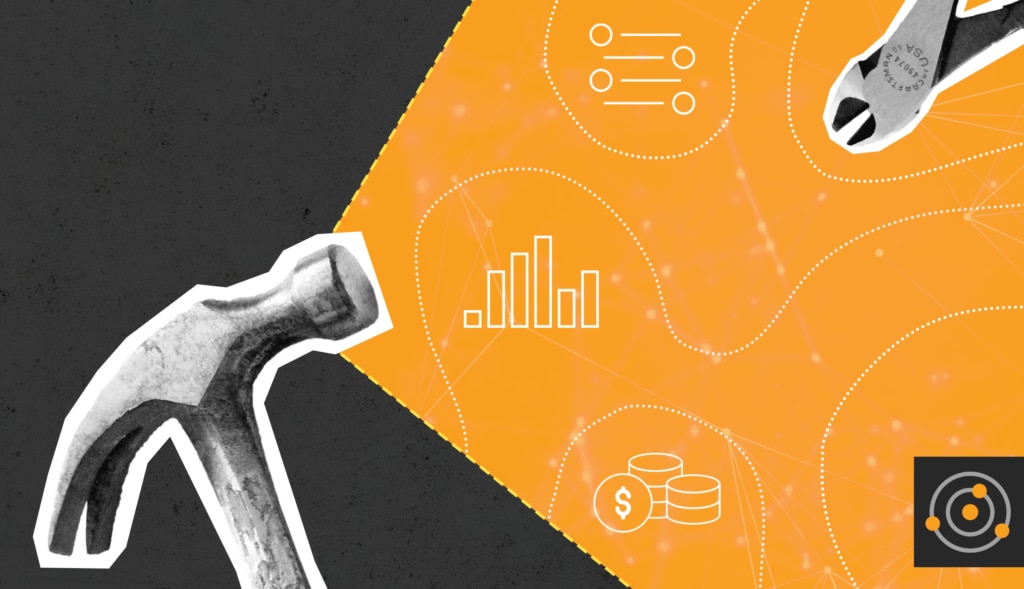To say modern enterprises are built on the cloud is an understatement. According to Gartner, enterprise spending on cloud applications
surged to 57.7% in 2022, and investments into public cloud services hit a respectable 41%. These numbers are only predicted to grow further in 2025 as enterprises accelerate cloud rollouts and move into a cloud
microservices architecture to realize greater agility, productivity, and competitiveness.
All this momentum will require businesses to re-evaluate whether their current tech stacks allow them to find problems and devise solutions before issues cascade and damage business reputations or their bottom lines wherever their IT infrastructure lives—from on-premises to multi-cloud environments.
With the need to extend visibility, it's not surprising enterprises with multi-cloud and hybrid systems are some of the
keenest adopters of observability solutions. Due to their size of operations, dispersed environments, diverse cloud requirements, and evolving business needs, it’s not uncommon for enterprises to use
multiple as-a-service or on-premises monitoring solutions to try to achieve single-pane-of-glass observability.
As enterprises further their transition to the cloud and digital transformation, relying on siloed monitoring solutions from different internal teams to achieve observability can lead to greater complexity and costs. Here are several reasons why businesses should consider a more unified monitoring approach to achieve true enterprise observability.
Fragmented islands of visibility into infrastructure monitoring
The imperative to rapidly digitize has led some businesses to build self-contained cloud operations consisting of applications, storage, and the monitoring solutions needed to maintain them. Though this siloed approach may effectively support day-to-day productivity and help track performance metrics, enterprises often find themselves lacking an end-to-end, single view of truth, especially when it’s needed most—during major outages or performance issues.
For enterprise operations teams like IT, DevOps, and SecOps, these drawbacks can manifest in longer mean time to resolution (MTTR) due to minimal visibility across their systems. With fragmented islands of visibility caused by disparate tools, one team might argue everything looks green on their screens when asked for assistance troubleshooting root causes and issues with dependencies.
But outages or issues rarely remain siloed and can cascade to affect connected systems or apps in wildly unpredictable ways. And when enterprise teams finally do obtain the required metrics, they must invest inordinate amounts of effort and time to structure, analyze, and correlate different data sets, further lengthening the time it takes to identify the source of a problem, its overall impact, and how to resolve it.
This is often where attempts to use different monitoring tools fall short of providing a real-time, unified monitoring solution. Without enterprise observability, there’s no broad overview of interconnected cloud system health and no way to know the full extent of an outage or what systems might be affected next.
Limited opportunity to experiment and scale
Taking a siloed, multi-tool approach to unified monitoring can also shackle enterprises in the long run in two ways. First, these tools risk being viewed as sunk costs within teams that have invested significant capital and time in deploying, integrating, and maintaining them, making them less inclined to retire them. Second, enterprises run the risk of needing to collect, correlate, and analyze ever-increasing volumes of telemetry data just to obtain an overall view of the health of their cloud and infrastructure. Over time, this increases the complexity of monitoring IT operations and extorts unsustainable amounts of time, effort, and attention from enterprise teams.
These limitations can inevitably impact the future digital aspirations of most enterprises. What happens if there’s a need to adopt a cloud application requiring intense and costly integration work? What if a software as a service (SaaS) vendor of a tool decides to stop future support on a critical feature?
By taking a unified approach to enterprise observability with a tool designed to seamlessly integrate with hybrid cloud operations, businesses aren’t handcuffed by the limitations of a fragmented monitoring strategy. Achieving unified monitoring using an observability solution can allow enterprises to build a dependable observability foundation so they can pursue new digital opportunities, explore solutions, and scale without incurring additional costs and effort.
Making the case for unified monitoring with observability
Enterprises with existing siloed monitoring tools may struggle to justify the move to unified monitoring with an observability solution. After all, the siloed multi-tool approach has worked so far; why shake things up? But not doing so can be costly, and as IT environments grow and become increasingly distributed and complex, the risk of performance issues or downtime affecting end users increases. This is why having the ability to monitor the health of your on-premises, hybrid IT, and cloud operations from a single dashboard often outweighs any cost disadvantage.
To gain stakeholder buy-in to transition to a purpose-built observability solution from key stakeholders like IT monitoring teams and upper management, look for a full-stack observability solution offering flexibly tiered licensing based on the number of nodes you need to cover rather than rigid enterprise license structures. You can learn more about
the benefits of implementing observability in this infographic.
Along with flexibility in pricing, ensure your chosen monitoring platform has built-in integrations with other required performance, cloud server, and application monitoring options.
SolarWinds Observability SaaS (formerly known as SolarWinds Observability), for instance, is designed to seamlessly connect monitoring data from web applications and their services with performance metrics from cloud and hybrid infrastructure, including AWS cloud monitoring and Azure performance monitoring. These visualizations can support your ability to optimize the performance, user experience, and business outcomes of modern, cloud-native applications.
Taking the step toward unified monitoring with observability and away from siloed, multi-tool monitoring approaches isn’t just a sensible decision—it’s vital for enterprises looking to digitally scale to remain competitive. After all, an enterprise only succeeds with a unified focus on what they do best; the same can be said of enterprise observability. Unified observability is an optimal way for enterprises to keep operations smooth, stable, and broadly visible.
You can learn more about how
SolarWinds Observability SaaS (formerly known as SolarWinds Observability) is built to provide complete visibility into application performance—alongside databases, networks, and end-user experience—by delivering holistic business insights and smart automation you can scale as your needs change.
Try it for free now.





